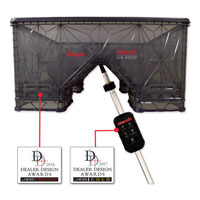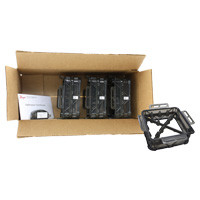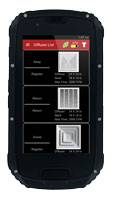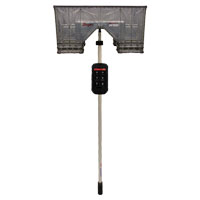
Air balancing is the process of testing and adjusting an HVAC system to deliver the correct amount of air to each room of a building. The most common tool used in air balancing is an air flow hood, which measures the volume of air coming out of a diffuser in order to find areas of the system where the flow is limited. The 2016 Dealer Design Award-winning SMART Air Hood® Balancing Instrument, Series SAH, was designed by your HVAC market leader to be the most accurate and easy to operate air flow hood on the market. But what exactly gives the Series SAH an advantage against comparable products?

1. Lightweight Ergonomic Design
The revolutionary crate design is constructed of a rugged polypropylene, which is the smallest and most aerodynamic design the industry has ever seen. Weighing only 5.75 pounds (2.6 kilograms) and ¼ of the height of current industry air hoods, the SMART Air Hood® is easier to maneuver with less physical stress, allowing a single user to balance an HVAC system.

2. Quad Flow Design Technology
Traditional industry cone shaped air flow hoods experience two main problems when measuring flow registers: poor accuracy of flow readings and back pressure compensation. These factors contribute to wasted energy and poor performance. Dwyer’s state of the art Quad Flow Design Technology is based on controlling the recirculating air patterns that can create back pressure effects, while mixing the flow more evenly and efficiently. This well-mixed flow for velocity sampling leads to superior measurement accuracy.

3. Simple Annual Calibration
Dwyer recommends recalibrating the SMART Air Hood® Balancing Instrument annually, at a minimum, to ensure maximum performance. When it is time for recalibration, simply detach the four quad flow sensing grids along with the sensor module and ship back in the custom return package using our RMA process or to any authorized Dwyer calibration service company. To ensure no downtime, you can purchase a new set of four calibrated quad flow sensing grids and sensor module (Model A-SAH-CK), which are ready to install onto your hood.

4. Wi-Fi Direct Communication
The Wi-Fi direct communication gives reliable communication with a distance of up to 200 yards (183 meters) between the hood and the handheld test instrument without the need for additional equipment. In conjunction with the hood stand, this allows users to set the hood up against the diffuser and adjust the damper with real-time readings.

5. Hood Stand
The SMART Air Hood® comes standard with a handheld pole that extends from 2 to 4 feet (0.6 to 1.2 meters). For full functionality and versatility of the unit, the accessory pole (Model A-SAH-12P) is recommended, which extends from 4.5 to 12 feet (1.4 to 3.7 m). The pivoting pole mount allows you to ergonomically position the SMART Air Hood® for almost any situation and the locking extender allows for hands-free use. This feature saves users from multiple trips up and down the ladder and the wireless handheld gives the ability to monitor real-time measurements while the damper is being adjusted.

6. Diffuser Library with Flow Coefficients
The PredictAir™ Application Software library of diffusers allows the user to correct for system errors by adjusting the type of diffuser that is being used on that job. Traditional hoods are calibrated on a single diffuser style, but because different diffusers direct air in different directions, air flow measurements can be from 3% to 50% out of tolerance. Contractors often have to correct for this inaccuracy by taking traverse readings and developing a K-factor to correct for system error. The PredictAir™ App allows users to select from a list of built in diffusers and their respective K-factor, eliminating this system error.

7. Predictive Balancing
The current industry method of balancing is commonly referred to as proportional balancing, which determines the flow between each terminal and the key. The key flow changes with each adjustment of any given terminal, so the balancing technician must estimate a flow for the terminal and adjust the key and the terminal until the correct proportion is achieved. The SMART Air Hood® Balancing Instrument is designed to provide Predictive Balancing, an industry first for air flow balancing, which guides the balancing technician on where to go to set the proper flow for each register. The PredictAir™ Application Software reduces the number of steps in the air flow balancing process using Predictive Balancing’s Express Balance mode.

8. Generates & Shares Reports
The SMART Air Hood® Balancing Instrument handheld includes job-based logging that will track the entire balancing process from beginning to end. This includes a balance summary that shows the final flow at each register and the deviation from target. All of the registers for a job can be set up ahead of time and distributed prior to performing the balance, and modifications to the setup can also be done onsite. Jobs can be paused and resumed, allowing for additional activities, breaks, or maintenance, without disrupting the balancing process. After the balancing process is complete, the logs can then be saved on the device or sent via email directly from the handheld.

The award-winning SMART Air Hood® Balancing Instrument and PredictAir™ App work together to not only reduce the time needed to balance an HVAC system, but to also simplify the air balancing process and reduce costs over the life of the product.
